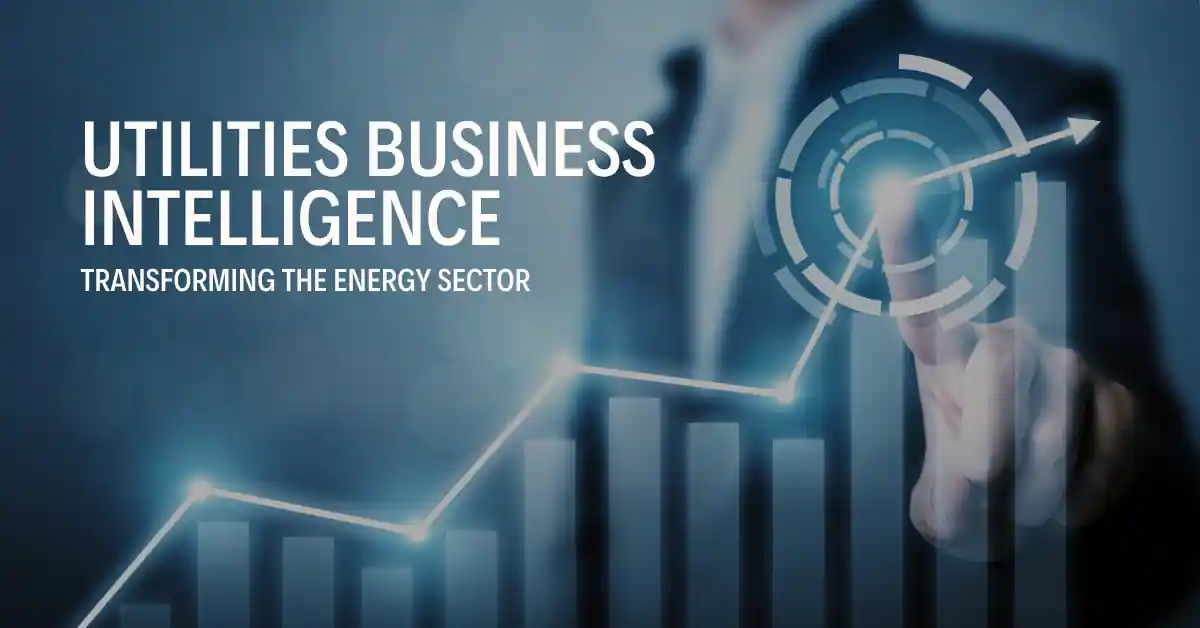In today’s data-centric landscape, the utilities industry is embracing business intelligence (BI) to streamline operations, enhance customer satisfaction, and enable data-driven decision-making. This article dives into the essentials of utilities business intelligence, its benefits, applications, and future trends, offering a comprehensive look at how BI is revolutionizing the utilities sector.
Table of Contents
ToggleWhat is Business Intelligence (BI) in Utilities?
Business Intelligence in utilities refers to the use of technology to collect, analyze, and present data insights. BI empowers utility companies to understand operational patterns, forecast demand, optimize asset management, and improve customer interactions.
Why Utilities Need Business Intelligence
Improved Efficiency and Cost Reduction
BI allows utilities to streamline processes and reduce operational costs by analyzing usage patterns and minimizing waste. Enhanced efficiency and better resource allocation lead to cost savings and operational improvements.
Enhanced Customer Satisfaction
BI tools give utilities a clearer view of customer needs, enabling companies to tailor services and improve customer satisfaction through more personalized interactions.
Strategic Decision-Making
Data-driven insights from BI help utility companies make informed, strategic decisions, supporting better planning, risk management, and sustainable growth.
Key Components of Business Intelligence in Utilities
Data Collection and Integration
Effective BI relies on data collection from diverse sources, such as smart meters, customer systems, and external data like weather forecasts. This data is then integrated into a centralized platform for cohesive analysis.
Analytics and Reporting Tools
Analytics tools process data to reveal patterns, trends, and insights, enabling utility providers to make decisions based on real-time data.
Visualization and Dashboards
Dashboards and visualization tools make data insights more accessible, allowing stakeholders to track performance indicators and monitor operations visually.
Predictive Analytics and Forecasting
Predictive analytics uses historical data and machine learning to anticipate future trends, such as energy demand and equipment maintenance needs, helping utilities to proactively address potential issues.
Applications of BI in the Utilities Sector
Demand Forecasting and Energy Management
With BI, utilities can accurately predict fluctuations in demand and adjust energy supply accordingly. This minimizes shortages and optimizes resource allocation.
Asset Management and Maintenance Optimization
BI aids in managing assets effectively by predicting maintenance needs before issues arise, prolonging equipment lifespan and reducing costly repairs.
Customer Experience and Service Improvement
By analyzing customer feedback and patterns, BI helps utilities improve services, personalize customer interactions, and promptly address service issues.
Challenges in Implementing BI in Utilities
Data Security and Privacy Concerns
Large-scale data collection requires strong cybersecurity measures to protect sensitive information from unauthorized access and breaches.
Integrating BI with Legacy Systems
Utilities often have older, legacy systems that are challenging to integrate with BI platforms. Updating these systems can be costly and time-intensive.
Future Trends in Utilities Business Intelligence
AI and Machine Learning in BI
Artificial intelligence and machine learning provide deeper insights into data trends, automating decision-making and optimizing utility operations.
IoT and Smart Grid Integration
IoT devices and smart grid technology are transforming data collection in the utilities sector, enabling real-time insights and faster, data-driven responses to energy needs.
Conclusion
Business intelligence is now an essential part of the utilities sector, providing the insights necessary for optimized operations, improved customer experiences, and strategic growth. As technology advances, the role of BI in utilities will continue to expand, driving efficiencies and supporting sustainable practices.
FAQs
- What is utilities business intelligence?
Business intelligence in utilities refers to using data analysis tools to help utility companies make informed, data-driven decisions. - How does BI improve efficiency in utilities?
BI enables utilities to optimize resource allocation, predict demand, and manage assets, leading to cost savings and operational efficiency. - What challenges arise when adopting BI in utilities?
Common challenges include data security, privacy concerns, and compatibility with existing legacy systems. - How does predictive analytics benefit utilities?
Predictive analytics helps utilities forecast demand, identify maintenance needs, and improve service by acting on future trends. - What are future BI trends in the utilities sector?
Emerging trends include AI and machine learning integration and IoT-based smart grid advancements for enhanced data insights and efficiency.





